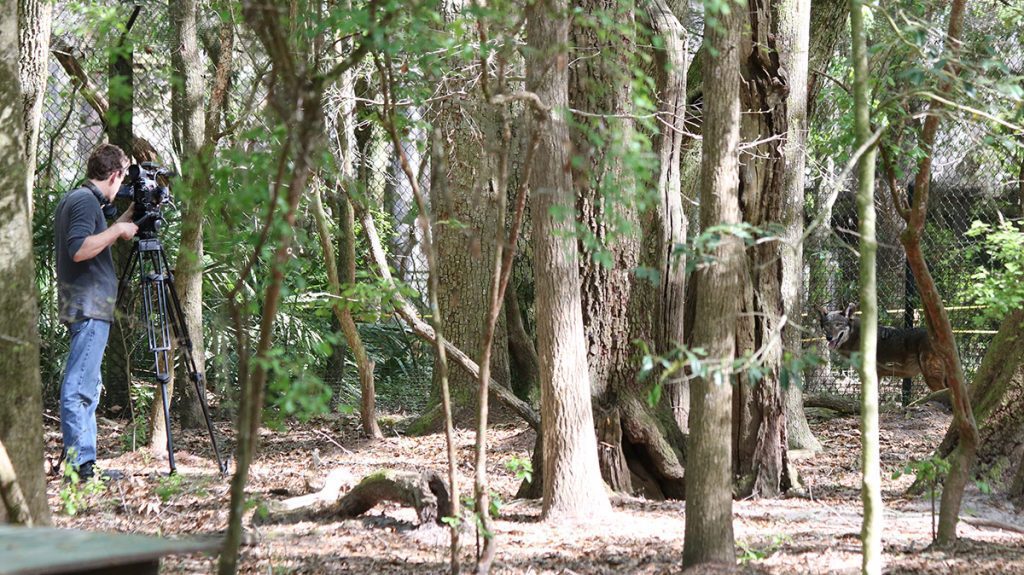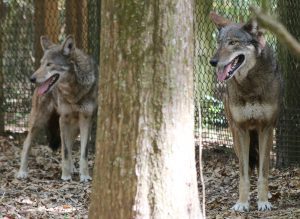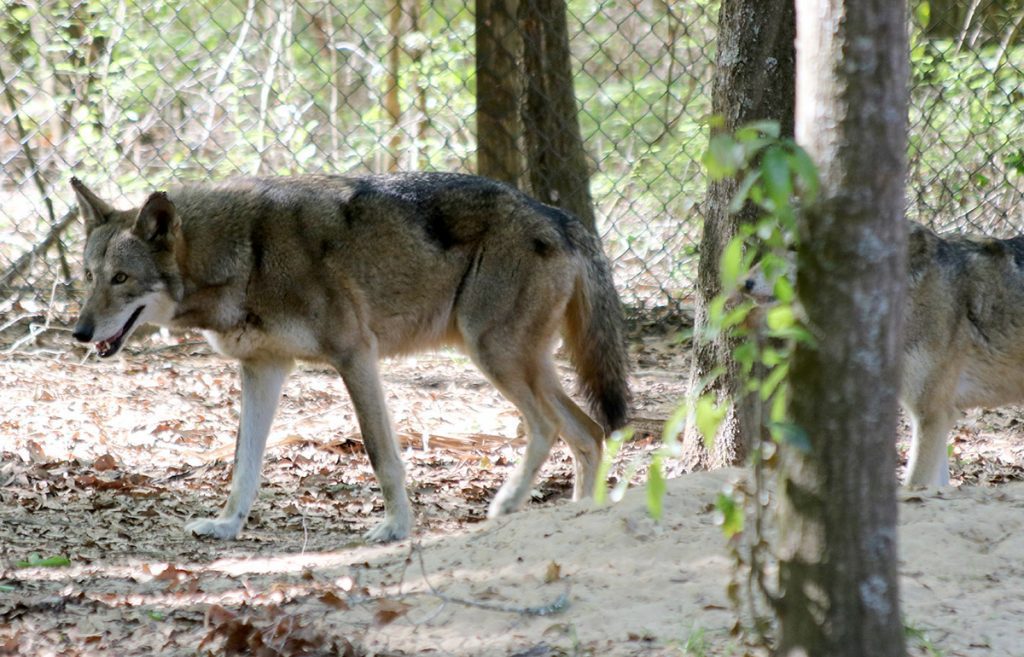Join us at the Tallahassee Museum on April 15 for a screening of Reel South: Red Wolf Revival. Red Wolf Revival is an award winning documentary on the wild population of red wolves, located entirely within North Carolina. We will also screen two shorts about our local efforts to help this endangered predator. Click to learn more.
 REEL SOUTH is a co-production of UNC-TV, South Carolina ETV, and the Southern Documentary Fund (SDF) with major funding provided by the Corporation for Public Broadcasting.
REEL SOUTH is a co-production of UNC-TV, South Carolina ETV, and the Southern Documentary Fund (SDF) with major funding provided by the Corporation for Public Broadcasting.
Thanks to Tracy Horenbein for providing original, local music for this segment. Tracy composed the score for our Roaming the Red Hills series last year.
Thanks also to Suzie Buzzo, Mike Jones, and the rest of the Tallahassee Museum animal staff for your help.
Rob Diaz de Villegas WFSU Media
I didn’t think they’d put us in the enclosure with the red wolves.
We’re at the Tallahassee Museum, and we just finished interviewing Mike Jones, the Museum’s animal curator. He has just told us that negative portrayals of wolves in children’s stories have painted an unfair picture of them. I guess I’m about to find out how unfair.
“They’re not deadly to people,” Mike says. “They stay away from people.”
Years ago at the Seacrest Wolf Preserve, I found grey wolves to be curious about our cameras. They’d mark their territory near me. They weren’t sure about this dark plastic and metal thing I was pointing at them. Not so with these red wolves. The pair runs around the enclosure, more interested in each other than the two camera people intruding on their space.
To be fair, these red wolves have less human contact than those at Seacrest. This pair, and any pups they may have, could potentially return to the wild. Once back in the wild, they need to keep their natural fear of humans.
For the red wolf, “the wild” is a five county area of North Carolina, centered on the Alligator River National Wildlife Refuge. A few breeding pairs live on isolated island propagation sites like Saint Vincent Island. And more breeding pairs live in zoos like the Tallahassee Museum. All of these wolves are part of a coordinated effort to return their species from the brink of extinction.
The Red Wolf | Hunted to the Brink
The red wolf was once a top predator of the American southeast. It’s a smaller species than the grey wolf, and while it still hunts larger game like white tailed deer, it will also eat smaller animals like cotton rats. And also unlike grey wolves, they will eat berries.
Unfortunately for the red wolf, sometimes their diversified diets have included livestock.
“When the European settlers came,” Mike says, “They decided that large predators, they didn’t want to have them around. And there was a lot of persecution of pumas- you know, panthers- and red wolves.”
Some states had bounties on red wolves. “If you brought a head to the courthouse, you would get two dollars. If you brought in the body of a lactating female, you’d get ten dollars, because they’d assume that the whole litter perished.”
By the 1970s, the red wolf was nearly extinct. Their population was scattered along a stretch of the Gulf in east Texas and west Louisiana. The US Fish and Wildlife Service captured as many individuals as they could find. Those seventeen individuals would be the future of the red wolf species.
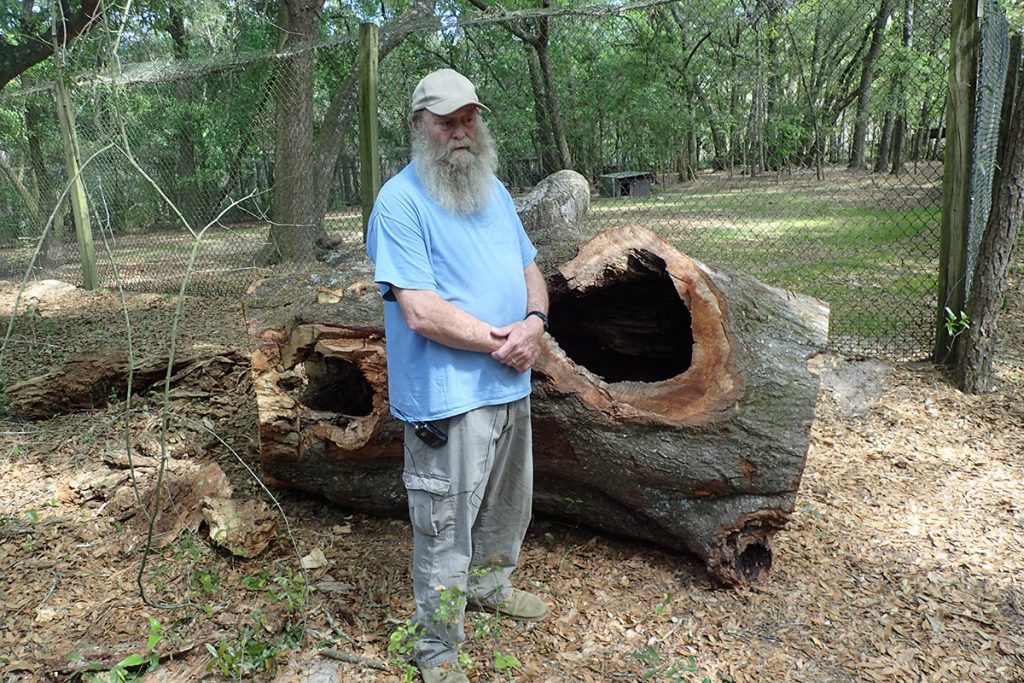
Mike Jones, Animal Curator at the Tallahassee Museum. The log behind him became part of the red wolf exhibit at the Museum, as a new place for the wolves to play and explore. Environmental enrichment of this kind keeps captive animals using their natural abilities.
Red Wolf Breeding
From the seventeen captured wolves, USFWS selected fourteen to found the species anew. Lacking modern DNA analysis tools, biologists used museum specimen skulls and skins to determine the criteria for ideal male and female breeders. These specimens were also their best means of identifying a pure bred red wolf. Aside from hunting, another threat to the species was interbreeding with coyotes.
Since the breeding program started without the benefit of DNA information, there is some controversy surrounding the purity of today’s red wolf population. We won’t address that here, but a 2015 article by the New Republic raises some interesting points about the wolves and the definition of a species.
The fourteen founders were taken to Washington State, where heart worm disease had yet to reach in the 70s. Their initial challenge was the small size of the group.
“Starting with such a small founder group,” Mike says,” Inbreeding was a problem.”
Biologists use what is known as a Mean Kinship Test to determine the relatedness of male and female wolves. The test compares the characteristics of the potential breeders; those with the lowest scores are considered to be the least related.
Over time, some genetic lines have had problems reproducing, or shown defects that remove them from the breeding pool. Mike Jones mentioned in the video that one of the off exhibit wolves at the Museum was cryptorchid. This means that its testicles didn’t descend at puberty. Some families have had retinal degeneration.
Every year, all of the potential breeding red wolves are reevaluated. Males and females get shuffled from Alligator River, the zoos, and the island sites to put as many potential breeders together as possible. The goal is to get as many of their offspring as possible in the wild, and to build a self-sustaining population.
Building a Wild Red Wolf Population
The female red wolf in the Tallahassee Museum’s main exhibit is recently arrived from North Carolina. After a couple of months with the male in that exhibit, on Valentines Day no less, they were seen mating. Mike Jones feels pretty good about the chances that she’s pregnant.
If she is, she’d likely have pups by the end of the month. But they won’t be part of a new pack at the Tallahassee Museum. The goal of all tbis red wolf breeding isn’t to fill zoos. It’s a big jump from living in captivity to living in the wild, however.
One strategy to get these potential pups into the wild would take them away from their family at a young age. “At the release site in North Carolina, if you had a wild mother wolf out there who had one puppy,” Mike explains, “and you have a litter in a zoo somewhere that had six puppies around the same birth date, they could take a couple of those captive born and put them in the den with the wild pup.”
Island Propagation sites are a transitional tool for adult wolves. Saint Vincent Island, for instance, has an acclimation pen where wolves are eased into a life of fending for themselves. When they are ready, they are released onto the island. They have to hunt for their food. They are free to roam over 12,000 acres and find spaces to make their dens. If they breed, like the Saint Vincent pair did last year, pups born on Island Propagation sites are taken to North Carolina when they’re 18 months old.
The US Fish and Wildlife Service estimates that there are about 100 red wolves living in the wild today.
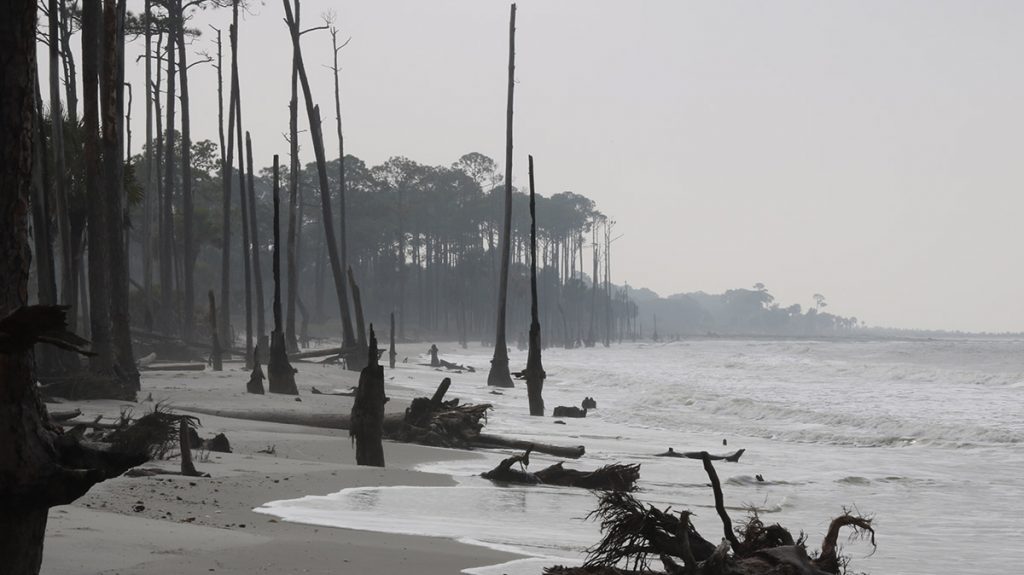
The Saint Vincent National Wildlife Refuge, a red wolf island propagation site located 80 miles southwest of Tallahassee.
Up Next: Red Wolves on Saint Vincent Island
We visited Saint Vincent Island yesterday for part two of this story. That will premiere at the Tallahassee Museum as part of our Red Wolf Revival screening on April 15 from 6-8 pm. You can look for that story here on the WFSU Ecology Blog that following week.
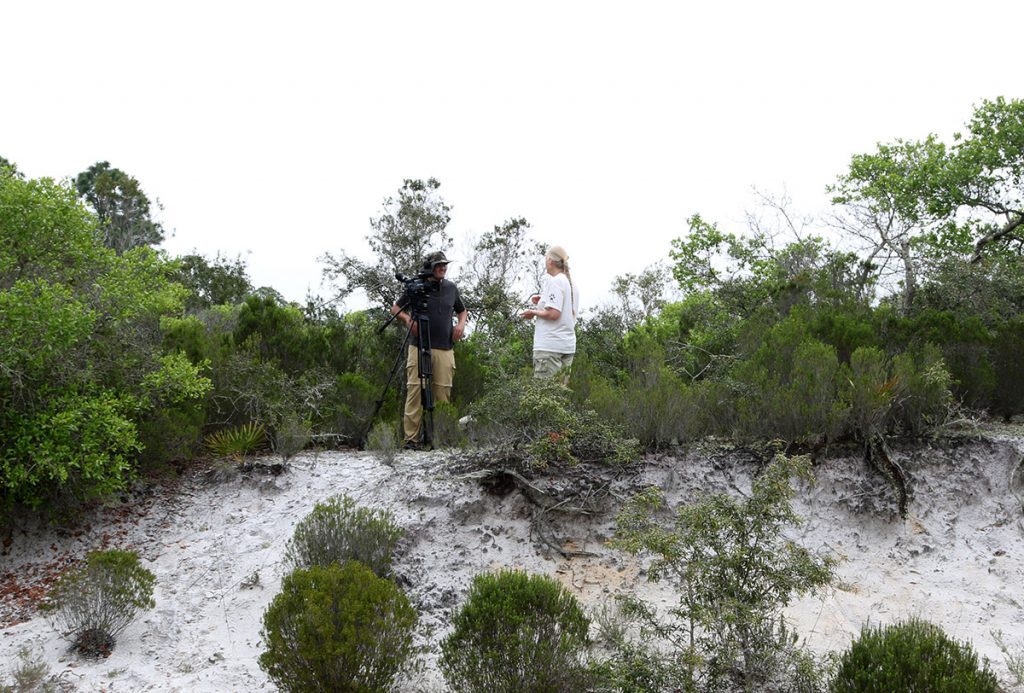
WFSU producer Rob Diaz de Villegas (Left) interviews Friends of the Saint Vincent National Wildlife Refuge member Robin Vroegop. This is the site of an emotional story Robin shared about the island’s red wolves following Hurricane Dennis.

